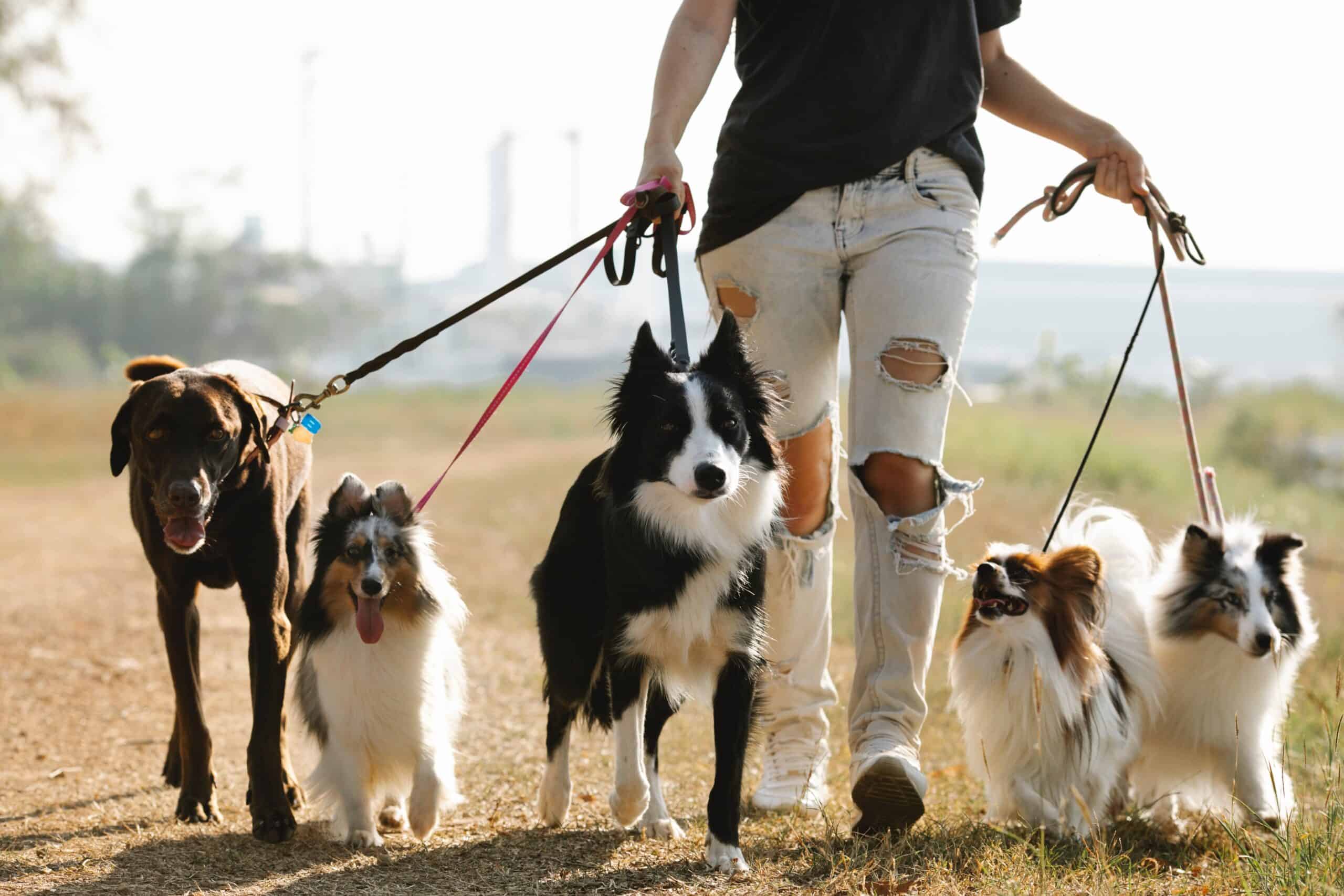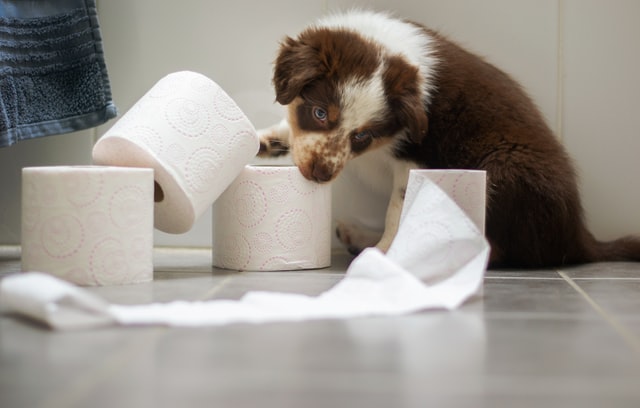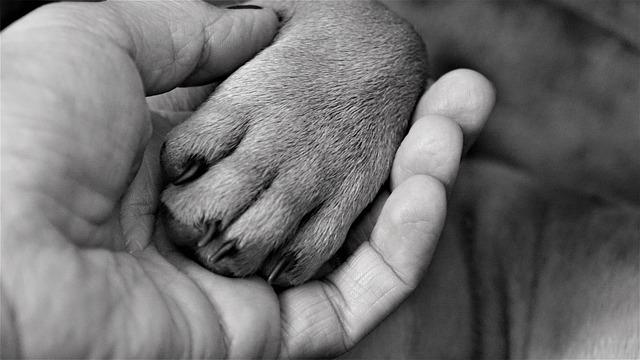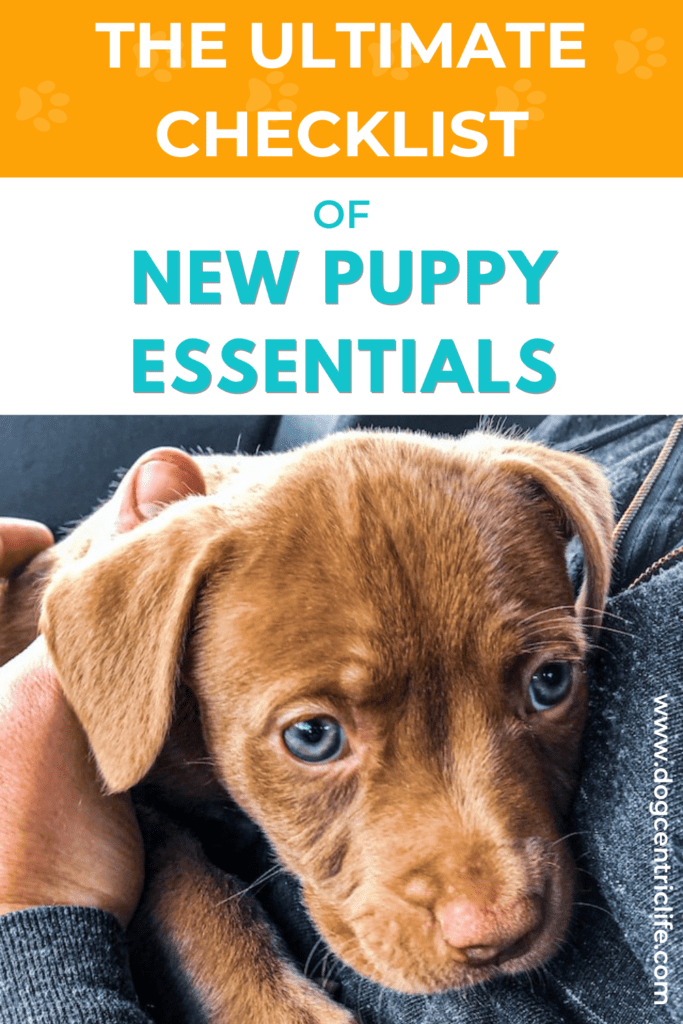So, you are bringing home a new puppy… congratulations! Bringing home a new puppy takes preparation… not unlike preparing to bring home a baby. I mean that in the sense that there are things you need to have on hand… or do… before their arrival. For a baby you need to make sure you have the essentials on hand like diapers, a car seat, formula, clothing, a crib, etc… and similarly, there are some new puppy essentials you should have on hand prior to them coming home.
Here’s our checklist of essentials:
New Puppy Essentials
- Collar and/or Harness
- ID Tag
- Leash
- Puppy Food
- Food and Water Bowls
- Dog Bed
- Dog Crate
- Variety of Safe Puppy Toys
- Treats Suitable for Puppies
- Poop Bags
- Enzymatic Cleaner for Accidents
- Baby Gate
- Car Restraint
- Choose A Veterinarian
- Consider Pet Insurance
collar and/or harness
When purchasing a collar or harness for a puppy it is best to pick those that are expandable so that, as your puppy grows, you can resize either a collar or harness rather than having to buy new ones. It’s very important to keep an eye on the fit for both a collar and harness to ensure that they are not getting too tight and causing discomfort… or worse… for your growing puppy.
There are many types of collars to choose from and, as a new puppy owner, you should ensure that you are aware of the pros and cons of each style before buying. The other consideration is whether to use a collar or a harness… or both. There are definite pros and cons to each. I, myself, for safety reasons, recommend a collar for ID tags, but for walking, a harness.

RECOMMENDED ARTICLE: DOG HARNESS OR COLLAR – WHICH IS THE BEST CHOICE?
ID Tag
Hopefully you will never NEED to rely on this… but, being proactive, just in case your puppy ever gets out of the house or the yard, you should have an ID tag on their collar. The tag should list, at minimum, their name, yours, and your contact information… all so that your puppy can get home safely. You could also consider micro-chipping your puppy… but an ID tag is the bare minimum for identification. Remember that if you move or change contact information that the ID tag… or micro-chip contact information… is updated.
Leash
It is best to get your puppy a fixed length leash… not a retractable leash. Leashes come in a wide range of materials, widths and lengths… so choose what you feel most comfortable with. Some thoughts to consider: for length, when it comes to training, a 6ft leash is pretty standard; for width, choose a wider or thicker leash for a large breed dog and a lighter leash for a smaller breed dog. Materials are personal choice… I have always used a leather leash as they stand up well to weather conditions and only get softer with time. I have had one leather leash for close to 20 years and it’s still a great leash!
puppy Food
Dog food that is specifically formulated for puppies plays a major role in the development of your puppy. A good puppy food will provide them with the nutrients they need during their formative years… helping them to grow and develop they way that they should. Choosing a cheap… or not age appropriate food… could leave your puppy open to physical problems down the road as they age. Though my thoughts on dog food has changed considerably over the years I have the belief that feeding your puppy/dog a high quality food may cost more in the moment… but is more likely to save you money with veterinary costs down the road.
When you first bring your puppy home you should ensure they are eating the food – if possible – that they have been eating previously. Many breeders will send you home with a small supply of the puppy’s food to get your through until you can get a bag at the store yourself. If you decide to change the food you are feeding your puppy keep in mind switching up your puppy’s food too quickly can cause digestive issues. Begin with the food they have been on and then follow this rule of thumb to transition to a new diet:
- Day 1: 25% new diet and 75% old diet
- Day 3: 50% new diet and 50% old diet
- Day 5: 75% new diet and 25% old diet
- Day 7: 100% new diet
Food And Water Bowls
Gone are the days of using a simple plastic bowl for food and water. We now have so many different styles, colors and materials to choose from. There are sets that are elevated and some that are even automatic! You name it… and it’s likely available! When making your choice do consider the type of material and whether it is safe (i.e. be mindful of some plastics and where they come from). As well, think about durability… and my favorite… how easy are they going to be to clean? Keeping those things in mind I am sure you will find something that not only suits your puppy… but may also suit your decor style! If you happen to travel, there are also plenty of space-saving (i.e. collapsable) travel bowls available for your puppy to use on your adventures.
Dog Bed
Just like dogs… dog beds come in a variety of shapes, sizes… and styles! Puppies can sleep for 18 – 20 hours each day… so why not give them a place that they feel safe and comfortable?!? When choosing a dog bed consider the type of material that is used (plush vs mesh)… as well, the height and depth of the bed…. making sure that it will fit your puppy as they grow… quickly. And… unless you want to be replacing the dog bed frequently… you may want to ensure that the bed is machine washable. There are so many options, you’re likely able to find options that even match your home decor… for those that like things to look “just right”!… like me!
Dog Crate
Traditionally, when choosing a crate size, your dog needs to be able to lie down, stand up and turn around. However, if you are purchasing a crate for your puppy, and want it to still be usable when they are full grown, you need to take their adult measurements into consideration. If you want to use the crate for house training, which I recommend, a crate that is too large may mean that your puppy eliminates in one area of the crate and then sleeps in another… and you don’t want that to happen. So… you don’t need to buy another crate… all you need to do is place a barrier in the crate, blocking off a portion, thus reducing the size of the crate. Now… the crate works for house training purposes and for when your puppy is a full grown adult!
If you happened to be concerned about how a crate might look in your home… there are plenty of crates that now look like a piece of furniture vs. a metal crate that you may be familiar with.

RECOMMENDED ARTICLE: FIVE TIPS FOR HOUSE TRAINING YOUR NEW PUPPY
Puppy Toys
Play is an important activity for both puppies and adult dogs. Playing with your puppy helps to build and strengthen your relationship. and getting to play with you can be incredibly rewarding for your puppy. Toys can also help to redirect them from those “unwanted behaviors” such as chewing your shoes… or the furniture. I would plan to have a wide selection of puppy toys – chew toys and soft, snuggly toys – giving your puppy a choice of fun things to play with at their new home. Personally… I would take a look at some of the KONG brand puppy toys… they have a range of choices and, having had chewers, they stand up to just about anything!
puppy Treats
When you begin training your puppy you will want to have some small, yummy treats available to give them as a reward for desirable behaviors. Treats should never replace your puppy’s regular meal. If you choose a treat that is soft in texture, they are easy and quick to eat… and if needed, are easy to break into smaller pieces… making them perfect for training.
Poop Bags
When you are out and about with your puppy… and adult dog for that matter… you should always have poop bags on hand so that you can “scoop the poop” when out in public. Like other products, there are many choices… biodegradable… odor control… colors… designs… you name it!
Enzymatic Cleaner For accidents
Your puppy is going to have accidents! Be prepared for that to happen… even if you stick to a house training schedule. Any accident your puppy has should be thoroughly cleaned with appropriate products to prevent further accidents from happening in that location.
Products which contain ammonia, vinegar or bleach should not be used. These types of products can actually attract your puppy back to the area and increase the chance of more accidents. Always use an enzymatic cleaner for cleaning up accidents… both for hard surfaces and for carpets.
BABY GATE
Baby gates aren’t just for toddlers anymore! These gates can help to keep your puppy from getting into trouble and keep certain areas of your home off-limits to your puppy. Maybe you want to keep them out of a room with an expensive carpet to avoid accidents… this is where a baby gate can come in very handy… or perhaps you want to keep them away from areas like stairs. It’s never a bad idea to have one… or two… on hand as a part of puppy proofing your home!

RECOMMENDED ARTICLE: NEW PUPPY? TIPS FOR PUPPY PROOFING YOUR HOME
Car Restraint
Using a properly tested safety harness, or alternative way to contain your puppy while in the car is essential for everyone’s safety. I imagine you wear a seatbelt for safety… shouldn’t your puppy be given the same protection? Under this category you can choose from safety harnesses, carriers/crates, and even car seats to keep your puppy safe while in the car. Not only can the device that you choose help to reduce the risk of serious injury or death in an accident, they also keep your puppy from escaping from inside the car. I remember our family dog jumping out the car window… long before there were car restraints for dogs – thankfully he was fine! Starting to use a safety harness… or whatever method you choose… at an early age will make it very easy for your puppy to learn that it is just a part of being in the car.
Choose a Veterinarian
Puppies have a number of vaccines and tests (i.e. parasites) that should be done at a young age to ensure they are healthy and protected… so having a veterinarian chosen before you bring your puppy home is a good idea. I know, post-COVID, there are a number of vets in my area that are not taking new patients… so do the leg work before and find a veterinarian that you want and one that supports your beliefs with respect to caring for your puppy so you aren’t left with trying to find a veterinarian in an emergency!

RECOMMENDED ARTICLE: CANINE COOPERATIVE CARE: GIVING YOUR DOG A CHOICE
Consider pet insurance
Not sure if you have considered pet insurance or not… but I certainly vowed to go this route with my next dog. I learned a very expensive lesson with Ollie when he developed severe arthritis! In today’s society we have insurance for our cars, our homes, health insurance for ourselves and our family… why not consider purchasing pet insurance for your new puppy? It doesn’t take long for those veterinary expenses to add up and pet insurance can help to recoup some of those, sometimes extraordinary costs… and perhaps save your dog’s life… in particular when it comes to those emergency trips to the vet clinic.
Enjoy this time… it goes by so quickly! While you are here be sure to download our FREE Puppy Socialization Checklist and include socialization outings with your puppy a few times each week as socialization plays a big role in ensuring your puppy grows into a well-adjusted, happy companion for you and your family.








0 Comments